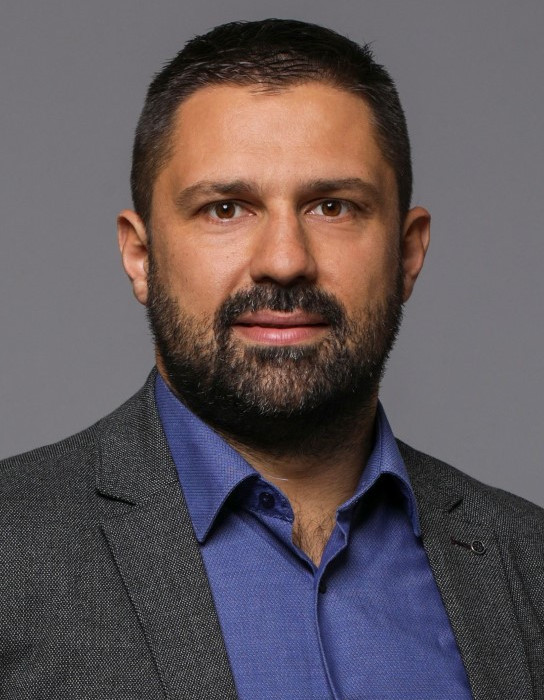Computer Modelling of Electrical Machines
Data is displayed for academic year: 2023./2024.
Lecturers
Course Description
Mathematical models of electrical machines based on partial differential equations and lumped parameters. Display of the model in a computer-friendly format. Consideration of the influence of magnetic saturation. Model implementations in the Matlab / Simulink software package. Application of the finite element method to simulate static and dynamic phenomena in electrical machines. Calculation of electrical machine parameters using finite element method. Models based on nonlinear flux linkage maps. Linking finite element based models to the Matlab/Simulink environment. Application of mathematical optimization in design and simulation of electrical machines
Study Programmes
University graduate
[FER3-HR] Audio Technologies and Electroacoustics - profile
Elective Courses
(2. semester)
[FER3-HR] Communication and Space Technologies - profile
Elective Courses
(2. semester)
[FER3-HR] Computational Modelling in Engineering - profile
Elective Courses
(2. semester)
[FER3-HR] Computer Engineering - profile
Elective Courses
(2. semester)
[FER3-HR] Computer Science - profile
Elective Courses
(2. semester)
[FER3-HR] Control Systems and Robotics - profile
Elective Courses
(2. semester)
[FER3-HR] Data Science - profile
Elective Courses
(2. semester)
[FER3-HR] Electrical Power Engineering - profile
Elective Courses
(2. semester)
[FER3-HR] Electric Machines, Drives and Automation - profile
Elective Courses
(2. semester)
Elective Courses of the Profile
(2. semester)
[FER3-HR] Electronic and Computer Engineering - profile
Elective Courses
(2. semester)
[FER3-HR] Electronics - profile
Elective Courses
(2. semester)
[FER3-HR] Information and Communication Engineering - profile
Elective Courses
(2. semester)
[FER3-HR] Network Science - profile
Elective Courses
(2. semester)
[FER3-HR] Software Engineering and Information Systems - profile
Elective Courses
(2. semester)
Learning Outcomes
- Define basic methods for mathematical modeling of electrical machines
- Select the electrical machine model and computer software that are best suited to solve the specific problem
- Predict and interpret the results of the computer simulation and evaluate the correctness of the model
- Apply mathematical models of electrical machines on a computer to solve specific problems
Forms of Teaching
Lectures
classical lectures using blackboard in combination with PowerPoint slides
Independent assignmentsproject tasks for independent solving on a computer
Laboratorylaboratory exercises on a computer for the purpose of practical demonstration and confirmation of the acquired theoretical knowledge
Grading Method
| Continuous Assessment | Exam | |||||
|---|---|---|---|---|---|---|
| Type | Threshold | Percent of Grade | Threshold | Percent of Grade | ||
| Laboratory Exercises | 50 % | 70 % | 50 % | 70 % | ||
| Final Exam: Oral | 30 % | |||||
| Exam: Oral | 30 % | |||||
Week by Week Schedule
- Fundamentals of computer modeling of electromechanical devices, dynamic models based on partial differential equations adapted for computer simulation, analytical software tools
- Dynamic model of a transformer
- Dynamic model of a DC machine
- Dynamic model of an induction machine
- Dynamic models of an induction machine
- Dynamic models of synchronous machines
- Dynamic models of synchronous machines
- Midterm exam
- Introduction to the finite element method, model reduction using periodicity and symmetry, finite element mesh settings
- Finite element method - determination of the position of the winding axis of an electrical machine, calculation of the inductances of the windings of electrical machines and transformers
- Finite element method - calculation of the operating point of a loaded wound field synchronous machine, a permanent magnet synchronous machine, and an induction machine
- Finite element method - static and dynamic machine models based on 2D mapping
- Introduction to optimization methods (deterministic, stochastic), optimization based on analytical models, finite element methods and metamodels
- Optimization of electrical machines and transformers - model variables, constraint functions, cost functions; examples of single-objective and multi-objective optimization
- Final exam
Literature
Chee-Mun Ong (1998.), Dynamic Simulations of Electric Machinery : Using MATLAB/SIMULINK, Prentice Hall
M. Ramamoorty (1998.), Computer - Aided Design of Electrical Equipment, Halsted Press New York, NY, USA
D. Žarko, S. Stipetić (2019.), Modeliranje sinkronih strojeva primjenom metode konačnih elemenata, skripta, FER Zagreb
For students
General
ID 222759
Summer semester
5 ECTS
L1 English Level
L1 e-Learning
30 Lectures
0 Seminar
0 Exercises
26 Laboratory exercises
0 Project laboratory
0 Physical education excercises
Grading System
85 Excellent
70 Very Good
60 Good
50 Sufficient


 Pristupačnost
Pristupačnost
